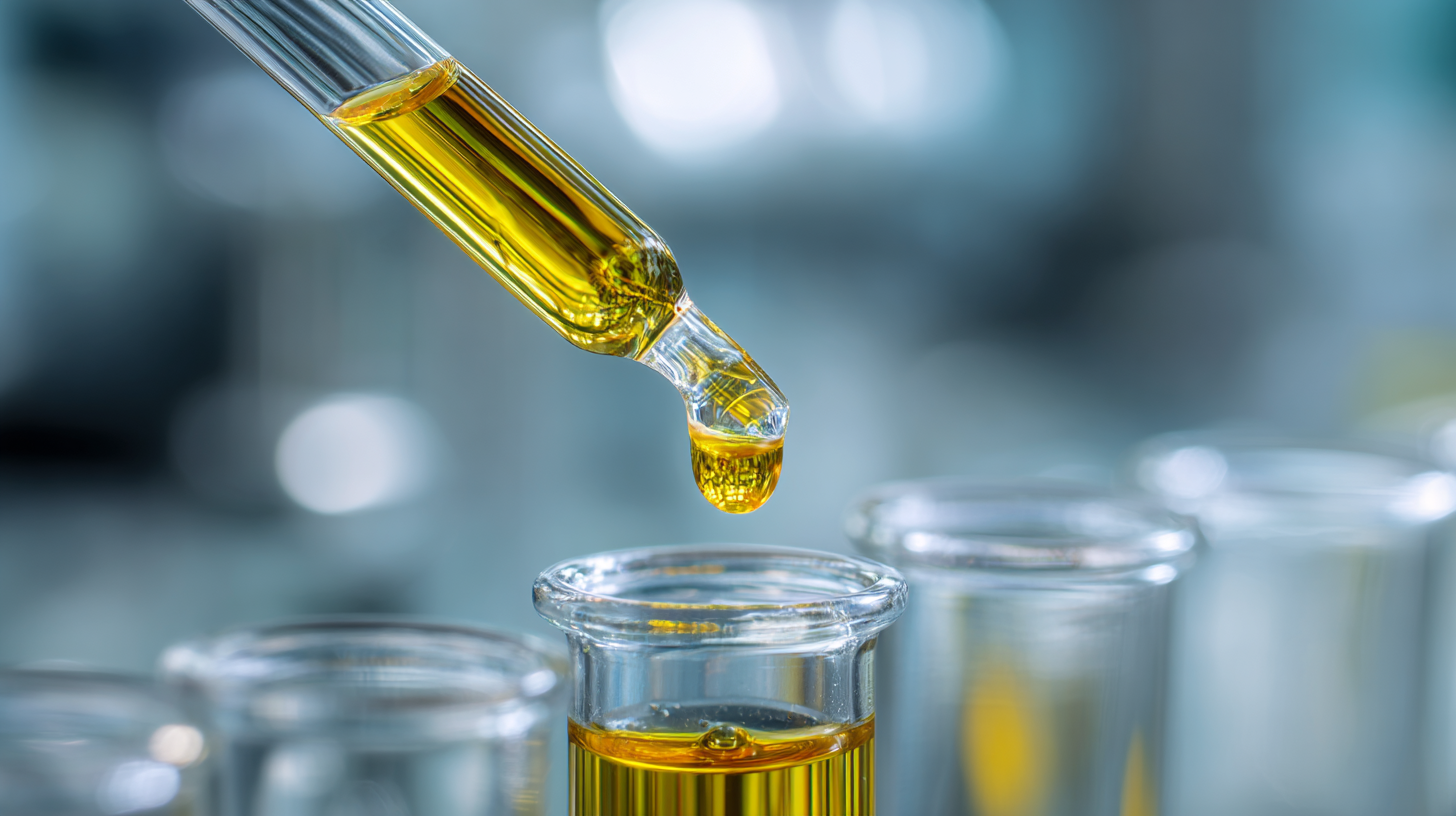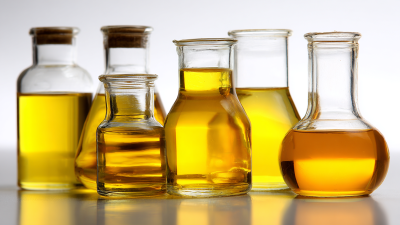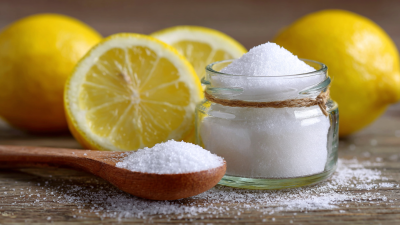How to Effectively Utilize Ethyl Oleate in Your Formulations
As the cosmetic and pharmaceutical industries continue to evolve, the demand for effective and versatile emollients has significantly increased. One such compound gaining attention is Ethyl Oleate, a fatty acid ester known for its excellent solvency and skin penetration properties. According to a report by Grand View Research, the global personal care ingredients market is projected to reach USD 19.5 billion by 2025, with a rising inclination toward natural and functional ingredients like Ethyl Oleate driving this growth. Its unique characteristics make it an ideal choice for formulators aiming to enhance product performance while ensuring consumer safety and satisfaction. In this article, we will explore the various applications of Ethyl Oleate in formulations, backed by industry insights and data to help you leverage its benefits effectively.

Understanding Ethyl Oleate: Properties and Benefits for Formulations
Ethyl oleate is an ester derived from ethanol and oleic acid, widely recognized for its unique properties that make it valuable in various formulations. One of its most notable features is its excellent solubilizing ability. This property allows ethyl oleate to effectively dissolve a range of lipophilic compounds, making it an ideal choice for formulations aimed at enhancing the delivery of active ingredients in pharmaceuticals and cosmetics.

In addition to its solubilizing capabilities, ethyl oleate possesses emollient properties, which contribute to improved skin feel and texture in topical applications. It acts as a skin-conditioning agent, helping to soften and smooth the skin while also providing a lightweight, non-greasy finish. Furthermore, its stability and relatively low volatility enhance its appeal in formulations, ensuring that the desired effects are maintained over time. These characteristics make ethyl oleate a versatile ingredient, suitable for a wide variety of products, including lotions, creams, and transdermal systems.
Best Practices for Incorporating Ethyl Oleate into Various Products
Ethyl oleate, a fatty acid ester derived from oleic acid, has gained considerable attention in the formulation of various cosmetic and pharmaceutical products. The versatility of ethyl oleate lies in its ability to serve as an emollient, solubilizer, and penetration enhancer. According to a recent report by the Global Cosmetic Ingredients Market, the demand for emollients like ethyl oleate is projected to grow at a CAGR of 5.2% from 2021 to 2026, driving increased interest in its applications across the industry.
To effectively incorporate ethyl oleate into formulations, it is essential to consider its compatibility with other ingredients. Product developers should aim for a concentration of 2-10% of ethyl oleate in oil-based and emulsified systems to achieve optimal sensory and performance benefits. This range allows for enhanced skin feel and improved spreadability while preventing potential greasiness. Additionally, conducting stability testing is crucial; formulations containing ethyl oleate should be evaluated under various conditions to ensure the integrity and efficacy of the final product over its shelf life. By following these best practices, formulators can harness the beneficial properties of ethyl oleate to enhance product performance and consumer satisfaction.
Formulation Techniques for Optimal Performance of Ethyl Oleate
Ethyl oleate is gaining traction in various formulation sectors due to its excellent solubilizing and emulsifying properties. According to a report by the International Journal of Cosmetic Science, ethyl oleate acts as an effective emollient, enhancing skin hydration and providing a smooth application profile. When formulating skin care products, it is crucial to balance ethyl oleate’s concentration, as levels between 5-15% have been shown to optimize the sensory experience without compromising stability.

In pharmaceuticals, ethyl oleate is often utilized as a solvent for injectable formulations. The European Journal of Pharmaceutics and Biopharmaceutics states that using ethyl oleate can significantly enhance the bioavailability of poorly soluble therapeutic agents. Techniques such as high shear mixing or emulsification under controlled temperature can further improve the incorporation and performance of ethyl oleate in these formulations. By employing these methods, formulators can achieve a significant increase in product efficacy, ensuring that both cosmetic and medicinal applications benefit from the unique properties of ethyl oleate.
Safety and Storage Considerations When Using Ethyl Oleate
When incorporating ethyl oleate into your formulations, it is crucial to prioritize
safety and proper storage practices.
 Ethyl oleate, an ester derived from oleic acid and ethanol, is generally regarded as safe for use in various applications, including cosmetics and pharmaceuticals.
However, appropriate handling measures should be followed to mitigate potential risks. Always wear suitable personal protective equipment such as
gloves and goggles when working with this chemical to prevent skin and eye irritation.
Additionally, ensure that your workspace is well-ventilated to minimize inhalation exposure.
Ethyl oleate, an ester derived from oleic acid and ethanol, is generally regarded as safe for use in various applications, including cosmetics and pharmaceuticals.
However, appropriate handling measures should be followed to mitigate potential risks. Always wear suitable personal protective equipment such as
gloves and goggles when working with this chemical to prevent skin and eye irritation.
Additionally, ensure that your workspace is well-ventilated to minimize inhalation exposure.
Storage conditions play a significant role in maintaining the integrity of ethyl oleate.
It is advisable to store the compound in a cool, dry place, away from direct sunlight and sources of heat.
Properly seal containers to prevent moisture uptake and contamination. Moreover, checking the storage area for compatibility with other chemicals is
essential, as ethyl oleate can react with strong oxidizers.
Regularly inspect stored ethyl oleate for any signs of degradation or changes in quality, utilizing it
before its expiration date for optimal results in your formulations.
Common Applications of Ethyl Oleate in Cosmetic and Pharmaceutical Industries
Ethyl oleate, an ester formed from oleic acid and ethanol, is increasingly gaining popularity in both the cosmetic and pharmaceutical industries for its versatile applications. According to a report by Grand View Research, the global market for cosmetic additives—which include emollients like ethyl oleate—is projected to reach USD 8.2 billion by 2025, highlighting the growing demand for innovative and effective ingredients in personal care formulations. Its emollient properties allow it to serve as a skin-conditioning agent, providing a smooth and moisturizing feel that enhances product performance in lotions and creams.
In the pharmaceutical sector, ethyl oleate is commonly utilized as a solvent and drug carrier due to its ability to dissolve both hydrophilic and lipophilic compounds. A study published in the Journal of Pharmaceutical Sciences highlighted that formulations containing ethyl oleate demonstrated improved drug absorption and bioavailability when compared to traditional carriers. This characteristic makes it a valuable component in the development of transdermal delivery systems, allowing for more effective therapeutic outcomes. The dual functionality of ethyl oleate, coupled with its favorable safety profile, positions it as a key ingredient in formulating effective cosmetic and pharmaceutical products.
Related Posts
-

How to Identify Top Quality Ethyl Oleate Manufacturers for Optimal Results
-

How to Choose the Best Methyl Paraben for Your Products
-

7 Compelling Reasons to Source Agmatine Sulfate for Your Business Needs
-

China's Premier Manufacturer Leading in Best Vitamin B Complex Exports
-

5 Effective Tips for Utilizing Glutamic Acid in Your Daily Routine
-

5 Secrets to Sourcing Doxycycline Hcl Like a Pro





